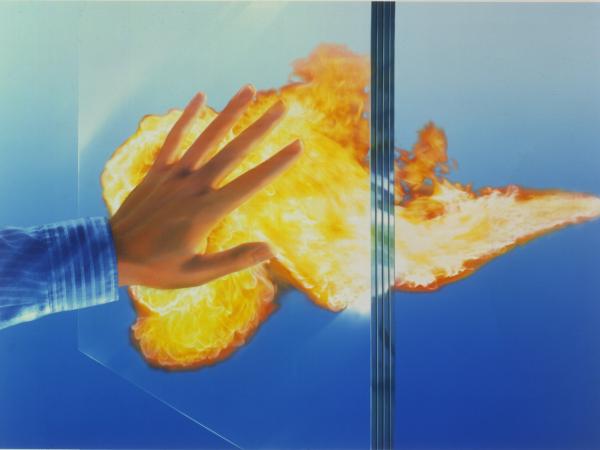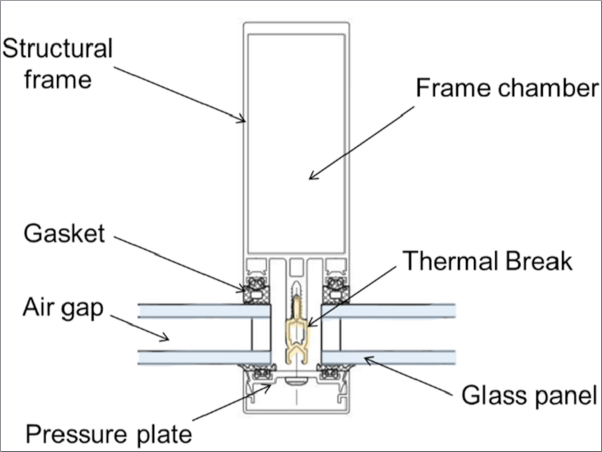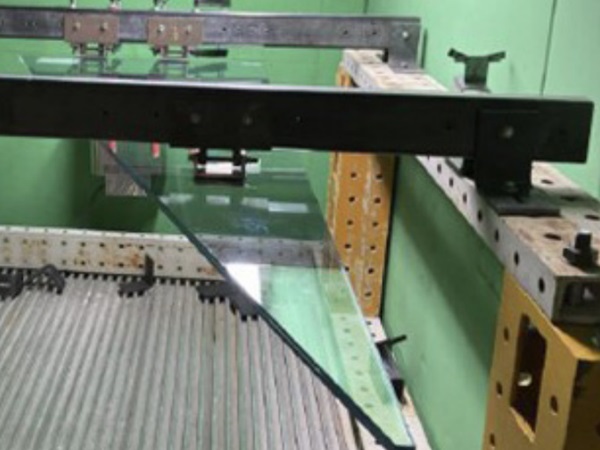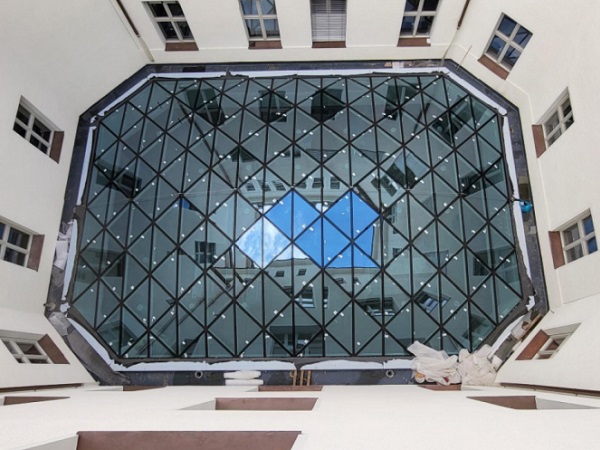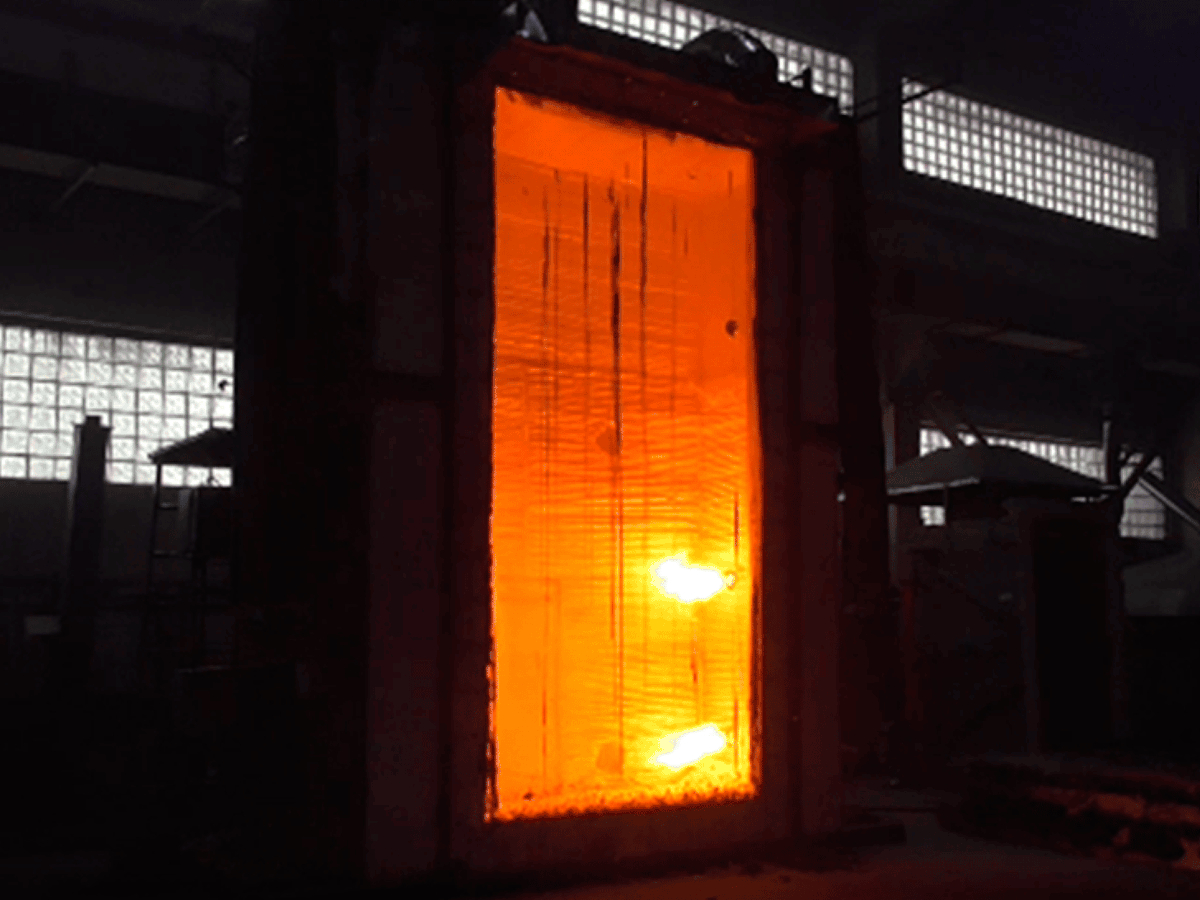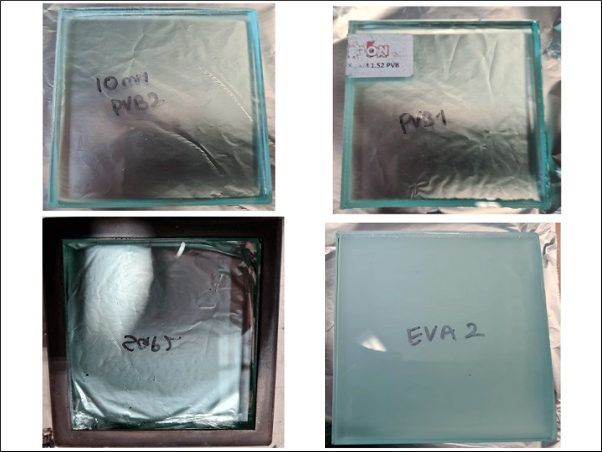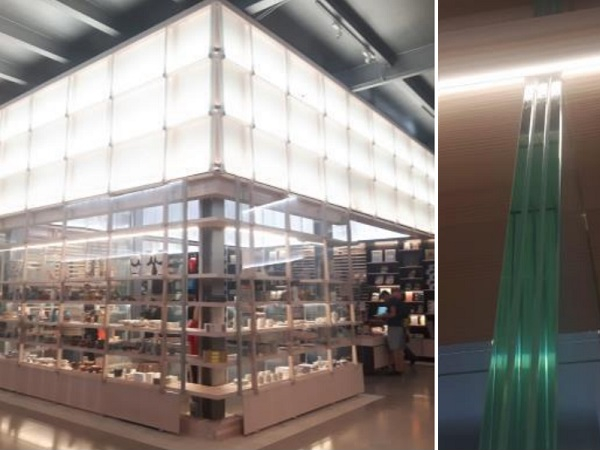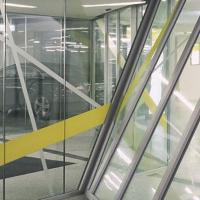There are essentially two ways to provide fire protection in a building: active systems and passive systems. Active systems, such as sprinklers or fire extinguishers, rely on components or people to move into "operation mode" when a fire starts. Passive systems are made up of components such as fire-rated glass that offer a degree of fire protection with no activation required.
Currently, there is a great deal of debate as to how active and passive systems should interact. Is one method preferable to another? Should they be used together or separately?
It is well documented that sprinklers, when working properly, can provide life- and property- saving benefits during a fire. And systems that incorporate both sprinklers and fire-rated glazing materials have tested positively.
However, some fire sprinkler manufacturers are now suggesting that fire-rated glazing is unnecessary if a sprinkler system is in place. Their theory is that if a fire starts, the sprinklers will activate and bathe the glass surface with water. This will keep the glazing system in place, where it will continue to offer fire protection. Consequently, they have begun recommending the use of tempered and heat-strengthened glazing materials in conjunction with their sprinklers.
Is this practice safe? Closer examination will show that it may be based on dangerous and unrealistic assumptions.
Fire-Rated Glass and Fire Protection
Fire protection is a critical issue in the United States. In 1996, a fire was reported every 15 seconds, a fire injury every 20 minutes and a fire-related death every 2 hours, according to the National Fire Prevention Agency (NFPA). Financial losses caused by fires reach nearly $9 billion each year.
A long-established principle for fire protection in buildings is "compartmentation," the use of physical barriers (such as fire walls and fire-rated glass) to limit the spread of fire and smoke. According to the NFPA 1994 Life Safety Code Handbook (section 6-1.1.1), "lack of compartmentation and rapid fire development have been primary factors in numerous multiple-fatality fires." Building codes attempt to achieve compartmentation by requiring the use of products that meet specific test criteria, such as fire-rated doors, walls and glazing materials. These products are tested at independent laboratories, and if appropriate, receive a listing for a designated period of time.
Specific test criteria have been established for fire-rated glazing materials. Fire-rated glass is installed in a door or window frame system and mounted in a test furnace. Fire near the surface of the glass creates temperatures of nearly 1,000 and 1,638 degrees Fahrenheit at 5 and 45 minutes, respectively (as a reference, standard tempered glass cannot withstand continuous temperatures in excess of 500 degrees Fahrenheit).
This test is designed to simulate a real fire. For a successful test, fire and smoke are not permitted on the side of the glass away from the fire.
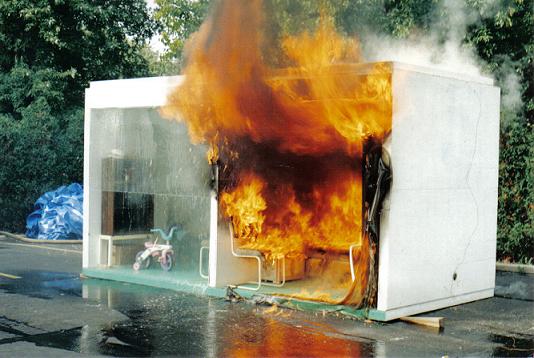
Glazing tested for more than a 20-minute rating undergoes a fire hose stream test. The water impact from the fire hose tests the structural integrity of the heated glazing, frames and door components as well as the ability of the assembly to withstand thermal shock without collapsing. Thermal shock can occur in a fire when water from sprinklers, fire extinguishers or fire hoses impacts the assembly. The glazed assembly must be able to withstand the fire hose stream test without creating openings for passage of fire and smoke. If the glazing and other materials in the assembly pass the fire and hose stream tests, they can be relied on to achieve the desired compartmentation.
Sprinklers & Non-Fire-Rated Glass
But what about non fire-rated glass? If sprinklers are installed nearby, isn’t that adequate fire protection?
The answer may be a resounding "no." True, some tests indicate that non-fire-rated glass will remain intact if a fire does not originate near the surface of the glass, if the sprinklers and supporting systems are operational and function early in the fire, and if they completely and continuously bathe the surface of the glass.
However, other tests indicate that fires occurring near the surface of the glass cause heat stress in the glass, which may then break and fall from the framing system even if the sprinkler operates properly. Since it is nearly impossible to predict where a fire will begin, it is unrealistic and even dangerous to assume that it will occur far from the glass surface.
The "Hospital for Sick Children" test in Toronto supports the above findings ("Fire Resistant Wall Assemblies with Glazing," SFPE Bulletin, July 1987). A fire test facility was developed at Canada’s National Fire Laboratory to determine the fire resistance of non-fire-rated window assemblies protected by automatic sprinklers. The source of heat was a propane burner located across the room from the glazing (approximately 7 feet from the glass surface). Sprinklers were carefully positioned to ensure uniform water coverage. In eight tests conducted with sprinklers on the fire-exposed side of the glass, the sprinkler activation time averaged only 32 seconds. When using tempered glass, the glass "remained intact for the duration of all tests in which sprinklers were located inside the burn room."
These tests indicate that sprinklers activated early by a large fire occurring away from the glass surface, before stress builds up in the glass, may allow the glazing assembly to stay in place for the duration of the 2-hour test.
The results of these tests are limited, however, because some test conditions were modified and the fires were never initiated near the glass surface. In short, the tests did not simulate a "real world" fire situation. For example, the water flow rate from the sprinklers was adjusted if dry spots formed on the fire-exposed face of the glass. In real life, such dry spots on the surface of hot glass cause heat stress and can be a principal cause of glass fracture.
For a sprinkler and glass assembly to operate successfully, it is vital that the sprinklers activate early, covering the glass completely and continuously. The dry spots in the test indicate that the glass surface was not completely covered with water. Adjusting the sprinkler water flow to cover these spots may artificially prolong the endurance of the glass. In a real fire, no one would be available to "adjust" the water flow.
Furthermore, and critically important, the heat source was located several feet away from the glazed assembly-- the most ideal situation for the glazing to survive. In real life, fires can and do ignite near the surface of the glass.
Another factor to examine is the sprinkler activation time. The test used special "quick response" sprinklers that responded two to three times faster than standard sprinklers. The sprinklers also activated early due to artificially high temperatures in the room, thus cooling the glass faster than normal. In addition, the sprinklers were located on the side of the glass exposed to the fire.
The authors of "Fire Resistant Wall Assemblies with Glazing" point out some of these test limitations. They note that "the location and response time of the sprinkler must be such that activation will occur before the glazing reaches critical temperature levels....Should sprinkler activation be delayed so that the temperature of tempered glass is in the range of 250 C. (approximately 482 F.), glass failure could possibly occur."
In 1995, Factory Mutual Research Corp. observed tests to determine whether a non-fire-rated window assembly and sprinkler "system" could provide protection equivalent to that of a fire-rated assembly. Using specially designed sprinklers, researchers found that tempered or heat- strengthened glass systems survived if the fire started far away from the glazing (approximately 8 feet) and if the sprinklers activated very early.
However, in subsequent tests in which the heat source was placed adjacent to a non-fire-rated glass system, the glass failed in less than 5 minutes. As a result, Factory Mutual declined to offer a passing grade to the system for use in general fire-rated locations.
Tests were conducted at Lawrence Livermore National Laboratory (LLNL) in 1986 to specifically examine how well non-fire-rated (tempered) glass and sprinklers would perform when the fire source was close to the glass surface. Two fires (250 kW and 40 kW) were used. In the test using the large fire, the sprinklers activated early and the glazing remained intact. But both tests using the smaller fire resulted in glass fracturing and falling from the test assemblies in less than 4 minutes. In other words, the glass failed before the sprinklers even activated.
What the LLNL tests seem to indicate is that tempered glass may perform adequately when exposed to relatively large fires that cause the room temperature to rise fast enough to fuse (activate) sprinklers before high stresses can be generated in the glass. However, when a fire is concentrated in an area near the glass surface and is not large enough to activate sprinklers early, sufficient stresses can be generated to shatter the glass. Who can rely on fires always being large enough to activate sprinklers before the glass is thermally stressed?
Similar tests were conducted at Underwriters Laboratories (UL) when a sprinkler manufacturer wanted to test its specially designed sprinklers with a non-fire-rated glazing "system." When the heat source was placed close to the glass, the glass failed in three of the four tests. In two of those tests, the sprinklers activated first, but the glass could not withstand the "thermal shock" of water hitting the hot surface. The test report states that in all three tests, "...large pieces of glass fell to the floor" after an average of only 4 minutes. UL did not give the manufacturer a listing for the sprinkler and glass wall system.
In support of a sprinkler and non-fire-rated glazing system, some suggest that fire could be kept away from the surface of the glass by using a 36-inch-high pony wall (Canadian Construction Materials Centre Evaluation Report, CCMC 12752-R, June 24, 1996). In this report, the CCMC reviewed UL test results regarding the Central Sprinkler’s Model WS Sprinkler System. It concluded that this particular sprinkler model complies with CCMC’s Technical Guide for Sprinkler-Protected Glazing Systems, Masterformat 15335, dated April 12, 1994, if used in accordance with the limitations and conditions stated in the report.
The pony wall indeed has limitations. First, it does not prevent flammable objects such as desks, file drawers, coat racks, etc., from being placed near the glass. Second, the window "sill" created by the pony wall is an attractive location for storage of flammable materials such as books and papers. Some sprinkler installation instructions state that "all combustible materials shall be kept 2" (50.8mm) from the face of the glass." After occupants move into a building, not only is it difficult to enforce this provision, but it is also unrealistic to think they will not place flammable objects near the windows.
How do curtains, blinds or other window coverings affect the performance of sprinklers? When these materials are placed between the glass and sprinkler, the water is unable to cool the glass, thus causing the glass to fail early on. Recognizing this fact, one manufacturer states in its literature: "Blinds or curtains must not be between sprinkler and glass." But that is not practical.
Sprinkler heads can be located up to 12 inches away from the windows they are trying to shade or cover, while blinds and curtains in offices, schools, hospitals and other commercial facilities are generally located very near the surface of the glass. And who is to ensure that subsequent building tenants will be aware of this critical warning? Again, this is unrealistic and unenforceable.
Sprinkler Limitations
Another concern with a "sprinklers only" approach to fire protection is that protection depends on the system operating. If the sprinklers don’t operate, fire protection literally goes out the window. Fire-rated glazing, on the other hand, is a passive system that provides protection without requiring any other system or activity.
Sprinklers are generally reliable, but they are not infallible. Last summer, a headline in the August 13, 1997, edition of USA Today read: "Widely Used Fire-Sprinkler Often Fails." After a particular brand of sprinkler failed to operate properly during some fires, UL conducted further tests. In those ongoing tests, the newspaper reported that this particular sprinkler model had a 31 percent failure rate. This reminds us that while sprinklers usually are reliable sources of fire protection, they can and do fail. Therefore, it is not a good idea to rely solely on the proper operation of sprinklers with a non-fire-rated system.
Confusion also exists concerning how sprinklers are listed. Some manufacturers imply in their literature that if a sprinkler head has a laboratory listing when tested by itself, it will also provide adequate fire protection when combined with a non-fire-rated glazing system. Tests seem to prove that this is not always the case.
Safe Solution
There is no question that sprinklers offer a valuable line of defense in fire situations. Sprinklers operating early in a fire have proven to reduce damage from fire and smoke, and they can reduce the amount of heat transfer through the glass by as much as 90 percent. However, combining sprinklers with non-fire-rated glazing provides questionable fire protection at best. Too many conditions must operate perfectly for this system to work consistently-and an actual fire acts differently than one under laboratory conditions. Also, fires originating near the surface of the glass can cause the glass to collapse within minutes even if the sprinklers work perfectly.
If a client requests that you supply tempered or heat-strengthened glass in lieu of fire-rated glazing because sprinklers are being used, remember that you could be held liable. Be sure to ask these important questions:
* What carries the listing-the sprinkler and glass "system," or only the sprinkler head?
* Can the risk of a fire close to the glass surface be eliminated?
* If the sprinklers fail, will the glazing offer any type of fire protection?
* Can the glass withstand thermal shock if the sprinklers come on after a fire starts?
When it comes to fire protection and life safety, too much is at stake to leave things to chance. The best way to provide fire protection is to use sprinklers in conjunction with listed fire-rated glazing materials that have passed the fire hose stream test.
Jerry Razwick is president of Technical Glass Products, Kirkland, Wash., factory agents for a variety of fire-rated glazing products.

